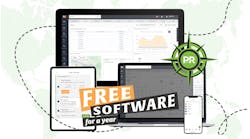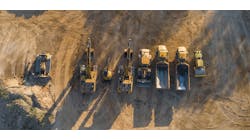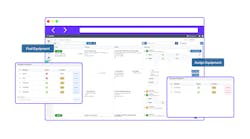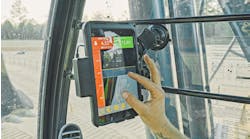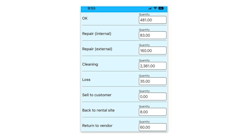Maybe you're one of the many rental owners who responded to the downturn in business over the past three years by reducing staff, trimming cap-ex, and generally spending as little as possible while accumulating as much cash as possible.
Now you feel the economy starting to improve. Cash flow isn't great, but it's getting better. You're beginning to think about where and how you should invest in your business as things continue to improve and cash begins accumulating faster. Aside from investments in rental fleet, which can be evaluated by reference to your utilization and ROI reports, where else do you need to invest?
One answer might be your rental technology. A surprising number of business owners (and not just rental businesses) are running operations on systems that haven't received any real attention since the Y2K scare. As you consider an investment of any size, you should be aware of the many improvements in productivity that have become available in rental management systems.
Productivity — always the golden ring in business — can be a lifesaver in an economic recovery. Depending on the types of rental customers you serve, you could see a sudden spike in business while your staffing levels are still low. By boosting productivity through technology you can meet that demand for a fraction of the cost of adding employees.
Innovations to be aware of
Virtual Machine software is now available. It lets multiple operating systems be active at the same time. This allows you to add additional applications that run on a different platform from your current server, and both servers (for example, Unix and Windows) can “collaborate” as your rental management system. It's a relatively new and easy way to get specific server capabilities without total system duplication.
Cloud computing is a technique with a skyrocketing profile. It's used for a wide range of applications. The actual computing power resides at a provider's premises, and the rental business accesses the computer over a secure Internet connection. No local server is required, and routine maintenance such as backups and upgrades to new releases is handled by the provider.
Third-party automated backup services are also increasing in popularity. Automatic data backups are generated and transmitted over the Internet to an off-site server farm automatically. This process takes place overnight or, in some cases periodically during the day. Email notifications confirm receipt of the backup files, and notify the business if a backup is not received when expected.
Productivity related to documentation comes in many forms these days. Quotations, contracts and invoices can now be emailed instead of being printed and mailed — a service preferred by environmentally conscious customers. Software is also available that lets customers e-sign contracts and return them by email to be stored in the cloud in a locked PDF format.
Productivity and the customer relationship
As the economy improves, and customers need to rent more often, they will look for productive supplier relationships that make it easy to do business. Rental management systems now commonly offer an Internet capability for customers to view real-time reports of items they have on rent, book their own reservations, call items off-rent, and perform other account management functions through a Web portal. This has the dual benefit of strengthening the customer bond and improving your staff's productivity.
Some systems can send managers email notifications of activities that need attention. An example might be when a customer requests a quotation or makes a reservation through your Web portal, and your counter manager automatically gets an email — or when a piece of equipment is called off rent using the portal, and your dispatcher gets an email. Again, both the customer and the rental operation experience a benefit.
The Internet has other applications as well. If you have multiple branch locations and are still using Frame Relay or leased lines to connect the locations to your server, consider using the Web instead. An Internet connection can be made secure with a Virtual Private Network (VPN), and is typically much less expensive than Frame Relay or leased lines.
New tools are now available to analyze the storehouse of data in your server. Tools such as Online Analytical Processing (OLAP) are relatively easy for non-tech types to use. I've often said that rental business management systems are a goldmine of data that should be extracted for managerial decision-making about cap-ex, marketing and growth plans. User-friendly analytical tools make the process much more accessible for the average business person.
Computer dashboards are an even more immediate way to see real-time information about the status of your business at a glance. An example of a popular dashboard metric in the rental industry is the fleet percentage (at cost) of equipment on rent, in repair, and on the yard. The ability to see this information at any time can have implications on the rates you quote, the way jobs are prioritized in the shop, and many other operational decisions.
The concept of image capture is another area of technological development that has relevance to the rental industry. A device can be used to capture and store an image of a renter's signature, and even print it on the contract or credit card authorization as an e-signature. Another application of image capture is to record damage to equipment. A digital snapshot, downloaded from your camera to the server, can be linked to the customer's contract as a permanent record for insurance or damage claims.
And finally, there is a growing appreciation for add-on capabilities that extend the value of computerization beyond the physical walls of a rental store. These include GPS systems that import data such as meter readings directly into your database for preventative maintenance scheduling and periodic billing; GPS systems that track delivery vehicles and record the time of arrival at a customer site (subsequently noted on the contract); and mobile devices such as iPads, Smartphones and netbooks that are capable of accessing a rental server from remote locations, providing data for sales people, field mechanics and management.
Rental business technology has come a long way from the “all or nothing” purchase decisions of the early years. Now it's possible to add features such as those discussed here to your existing rental system, assuming it's relatively current and in good condition. Many rental operators still don't realize this, and miss out on capabilities that could elevate the way they operate.
A number of these developments were introduced to the rental industry prior to the recession, and system suppliers have used the quiet part of the cycle to refine and enhance their capabilities. As a result, rental operators have a rich technical buffet to choose from at a time when productivity is both a competitive advantage and an economic necessity. Whether you decide that an entirely new system makes sense, or want to improve on what you currently have, there are good options worthy of consideration.
Jack Shea is CEO of Solutions by Computer, Springfield, Mass.

